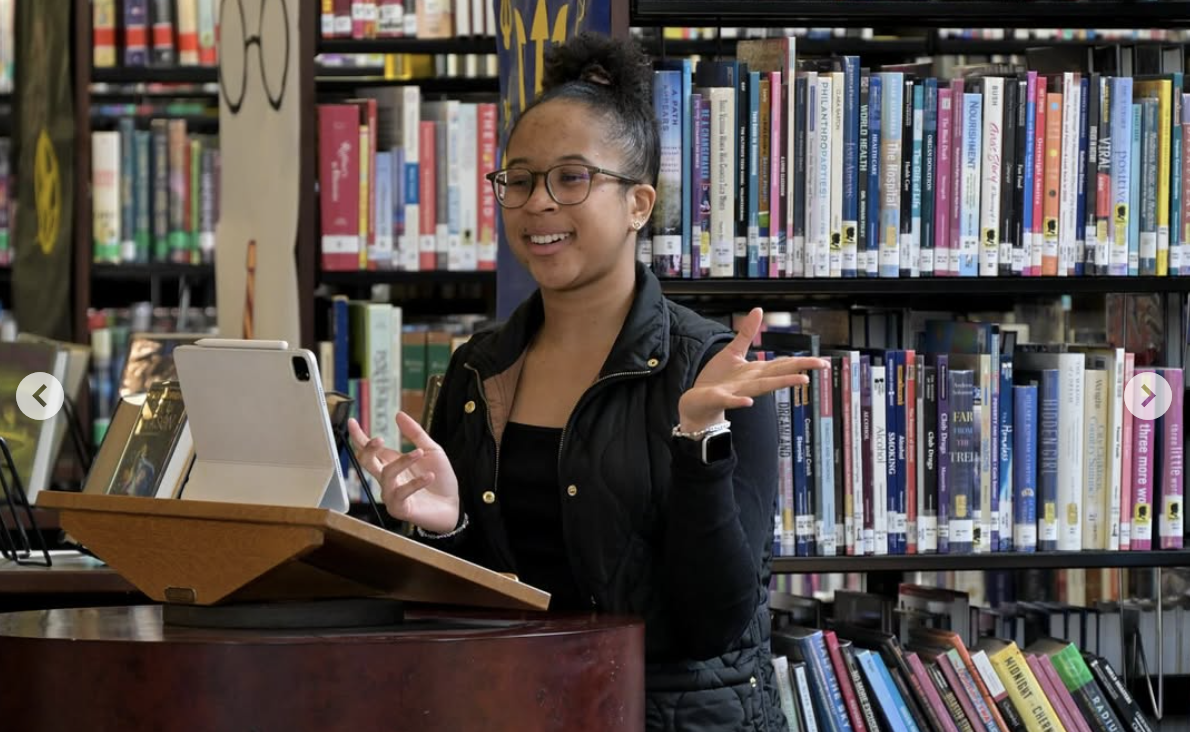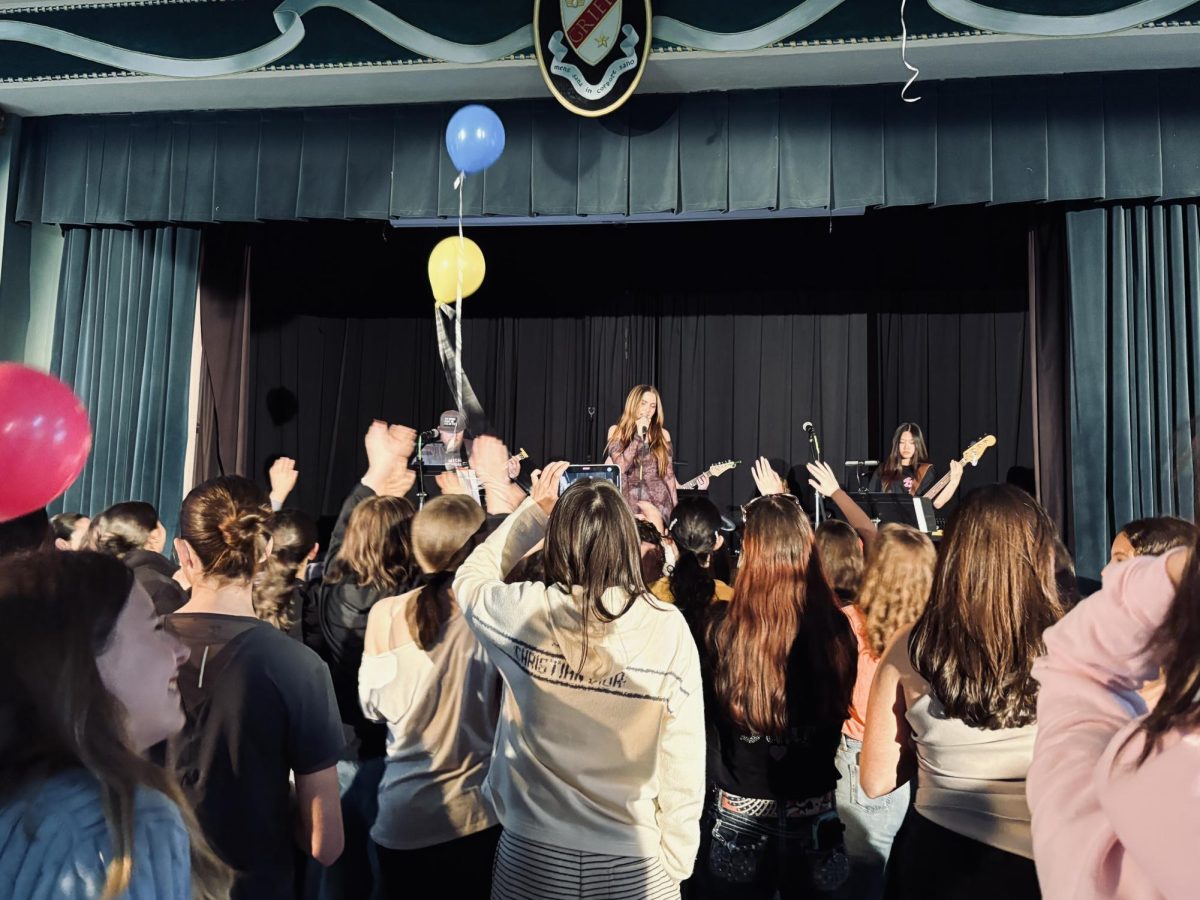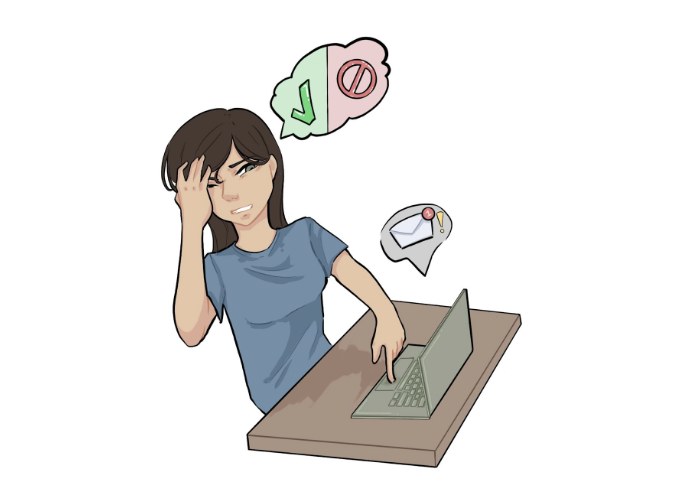In 2023, a Pew Research survey found that 92% of teens are frequently online throughout the day–46% responding that they were almost constantly using the internet. The same year, a Harvard study concluded that exposure to social media can lead to myriad mental health issues like depression and anxiety in teen girls.
The research surrounding social media is a bit conflicted though. In a January 2024 article, the Mayo Clinic said, “Social media doesn’t affect all teens the same way. Use of social media is linked with healthy and unhealthy effects on mental health.” Yale Medicine added to the conversation in a June 2024 article, saying, “While there are indicators that it can have a profound risk of harm to teens (more on that below), social media use aimed at making healthy connections with others may actually be beneficial to some people.”
While the conversation is split, the research on the negative effects of social media exposure was strong enough to lead Grier School to make some changes to the 2024-2025 school year. The school decided that they would go phone-free throughout the entire school day in an attempt to limit the damaging effects of the internet on students. Of course, we’re already well into the second semester of the school year, so this is nothing new. However, the recent announcement reinforcing a pre-existing rule limiting headphone usage around campus has sparked new conversation.
“I think that what we’re seeing is that we’re actually really enforcing our rules now…It’s really important that if you set the expectation, you have to enforce the expectation,” said Head of School, Kara Lawler, on why she chose to make the announcement.
Of course, this led to a flurry of questions: When can we use headphones? Can we walk around with them after school? Am I allowed to use them in class if my teacher says it’s okay? And the biggest one of all–why? Dean of Students and English teacher, Dr. Erin Guydish-Buchholz (“Dr. GB”), described this frenzy, saying, “I think initially, students heard ‘no headphones,’ and it kind of went off the Richter scale.”
A week later, and the ruckus behind the ban had slightly died down, but there were still blurred lines between exactly what we could and couldn’t do. Some thought that there was a strict no headphones policy within the school day–not even for class. Others were confused if we could even walk around campus with them after hours.
Ms. Lawler clarified the particular rules behind headphone usage. “You can have headphones on campus, in your dorm room, in the fitness center, you know, those kinds of things,” she explained. “We don’t want them around the necks or in classrooms unless it’s teacher-driven. So if you’re in ESL or you’re in a foreign language class, and the teacher says, “you can get out your AirPods or your headphones,’ then that’s fine if it’s teacher-directed.”
It doesn’t necessarily send a great signal socially when you have headphones on when someone is talking in class. You have to multitask, dividing your attention between the two things you’re hearing. Most students understand this, but the issue of usage outside of the classroom is still up in the air.
 Dr. Guydish-Buchholz has since clarified that it’s okay to wear small earbuds, like AirPods around school, just not the large over-ear headphones. “When you have very large headphones on, it is literally a social marker that’s kind of like, ‘don’t talk to me right now,’” she said. Ms. Lawler and Dr. Guydish-Buchholz both feel as if the over-ear headphones are almost rude within certain spaces. When trying to build community, it’s important that everyone feels welcome and open, but over-ear headphones are often used as a signal to not talk to a person when they’re wearing them. “It’s really hard to build community when you’re closed off to hearing your community members,” Ms. Lawler said. “If it seems like you’re closed off if you’re walking around campus, or you’re sitting at dinner with headphones, then it feels like you can’t talk to that person.”
Dr. Guydish-Buchholz has since clarified that it’s okay to wear small earbuds, like AirPods around school, just not the large over-ear headphones. “When you have very large headphones on, it is literally a social marker that’s kind of like, ‘don’t talk to me right now,’” she said. Ms. Lawler and Dr. Guydish-Buchholz both feel as if the over-ear headphones are almost rude within certain spaces. When trying to build community, it’s important that everyone feels welcome and open, but over-ear headphones are often used as a signal to not talk to a person when they’re wearing them. “It’s really hard to build community when you’re closed off to hearing your community members,” Ms. Lawler said. “If it seems like you’re closed off if you’re walking around campus, or you’re sitting at dinner with headphones, then it feels like you can’t talk to that person.”
There’s also the aspect that it’s literally difficult to listen to a person when wearing large headphones. Even with nothing playing in them, they cover your entire ear, and even have noise cancellation features. If someone tries to talk to you, you can still barely hear them. How do you build a community if no one can hear each other?
This leads to the reason behind the entire point of the ban–to build and improve the school’s community. The school is making moves to balance the positive and negative impacts of technology, and headphones are not excluded. “As the adults in the room, and the leader of the school, how can I knowingly allow you to be hurt by something? Right?” Ms. Lawler said. There’s a level of responsibility for the adults involved to help teenagers build healthy habits so they can have them as they continue to grow up. However, there are still downsides to this decision.
A lot of students report they actually use headphones and music to focus on work in class, especially independent work. Sophomore Izzy Maroko said, “I feel like it could help if you’re doing silent work in class, or if you’re working on a long project.” While students definitely can use headphones if they have an accommodation, many who don’t have accommodations also feel like they benefit from being able to zone out to music while working.
Even if it is teacher-directed, every student is different. So if a teacher says no headphones in class on a day for independent work, this could be a drastic hit on the wellbeing of one student as compared to one that isn’t as bothered. While one person could be completely fine without them, someone else might not be able to get anything done. “It’s not being able to have that when you need it,” senior Anabelle Mack said.
Of course, there’s a level of faith needed for a teacher to trust a class to be doing their work when allowed headphones. “There are some breaking rules in terms of, especially, during study halls, students were logging onto, like, YouTube and watching that, instead of doing homework during study halls,” Dr. Guydish-Buchholz said. “But at the same time, so often we’re hearing, ‘We’re so stressed out. We don’t have time to do all our homework.’”
Ultimately, there may still be some trouble-shooting to be done. At the moment, it’s a somewhat new rule and a fresh conversation for the school. Grier School is one of millions of schools dealing with this issue, and we all have to work together to find the best solution.














Ms. Dunklebarger • Mar 4, 2025 at 7:10 am
Well done! You did an excellent job presenting both sides and contributed to the conversation by giving students and staff many points to ponder. Excellent article!
D. McCloskey • Feb 18, 2025 at 3:50 am
Great subject, article, thorough interesting dialogue, and discussion.